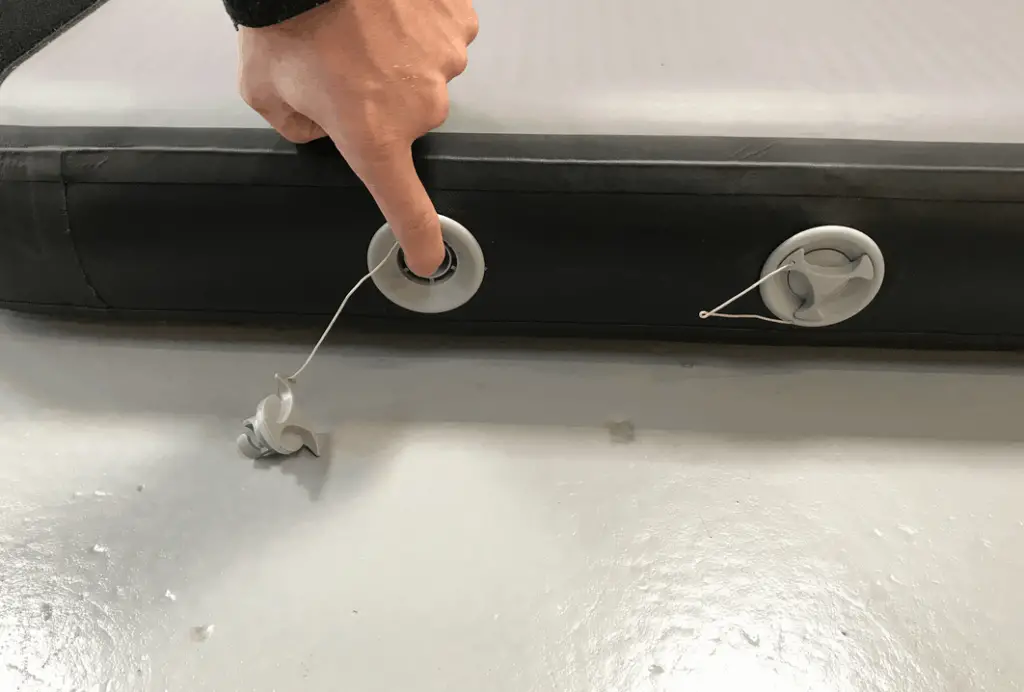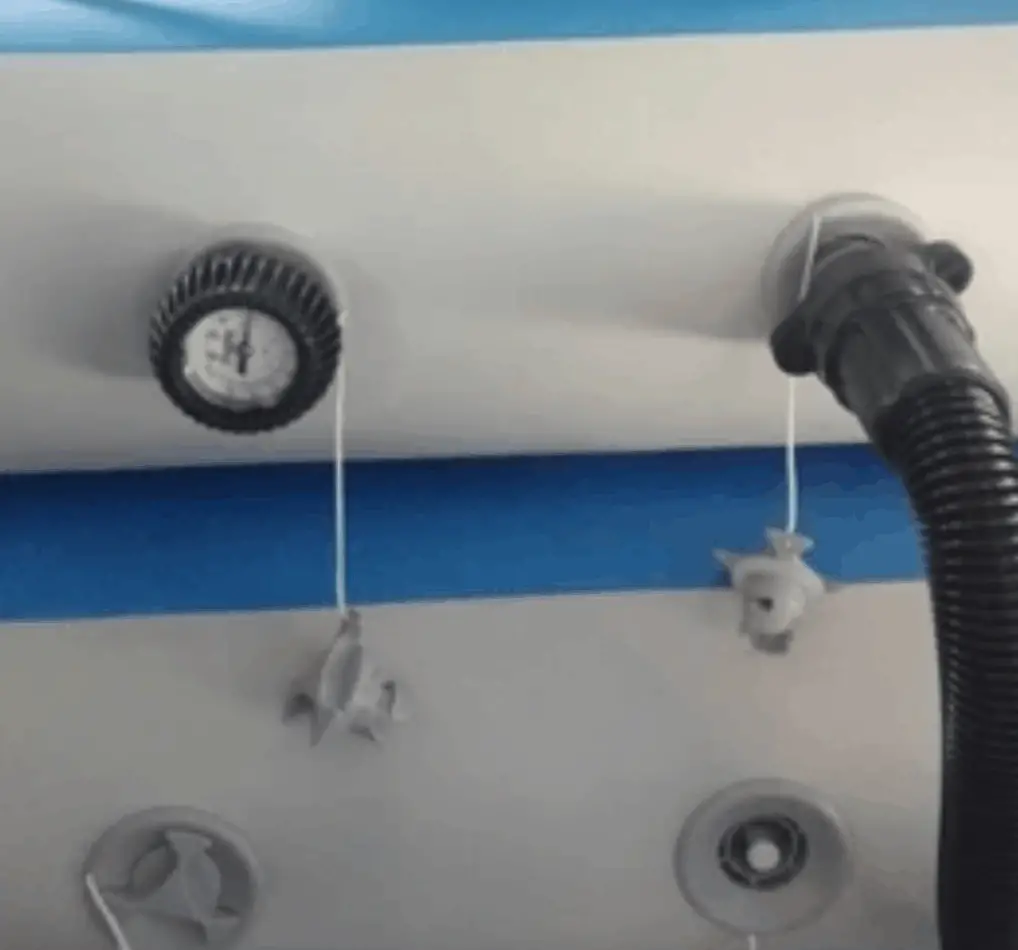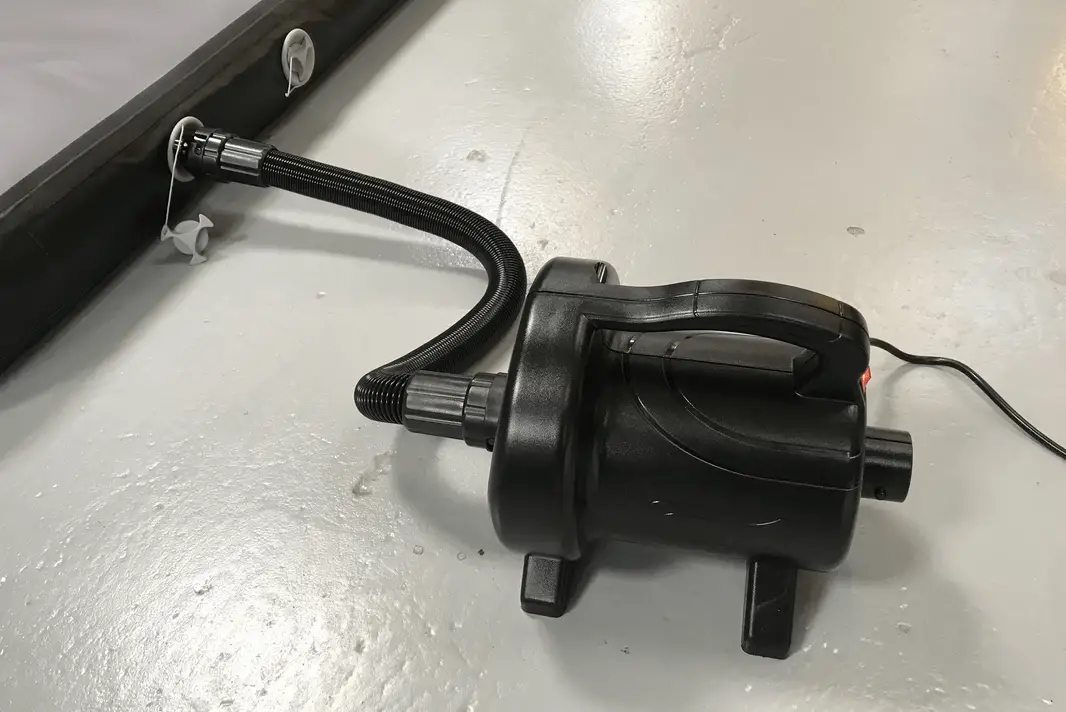A gymnastics air track is an important piece of gymnastics equipment that you can get for your own home. However, in order to use an air mat, you first have to air it up by pumping air into it. This is quite simple to do, though it can seem a little daunting if you have never used an air pump before.
An air track is pumped up by using an electric pump, the tip of which is inserted into a valve on the air track. If you don’t air up your air track correctly, then the air track will not work properly for you with various problems arising if the air pressure is too low or too high.
This allows you to train at your various gymnastics skills without having to get out of the house to train if you do not want to. The first time you pump up your air track can be the trickiest since you aren’t familiar with it yet.
Inflating Your Air Track For The First Time
When you get your air track, it will most likely come in a sturdy PVC bag that protects your track from getting punctured. Before you take your air track out of this, you should decide where you are going to set it up and clear that area of any sharp object.

If you are going to be setting up your air track outside, it might be best to lay down a tarp or other protective layer so that nothing punctures your track. Once you take your track out of its protective cover, place the end where you need to so that when you roll it out it will be where you want it.
Then, untie the rope or cut the tie that is keeping it rolled up. You can cut the tie before you get it in place, but doing so will cause the air track to start unrolling and make it more difficult to get into place. With the air track where you want it, roll it out.
Get out your air pump now and find the air valve on the air track. Depending on your air track, you will likely need an air pump that is specifically for airing up gymnastics air tracks. The valve should turn counterclockwise while applying pressure to open, which will allow you to attach the end of the pump to the valve.
Then, air up your air track as needed. Disconnect the air pump from the track when you are done. Turn the valve clockwise to close it and prevent air from leaking out. If you are going to be leaving it up for a while, use the valve wrench to get the valve on your track as tight as possible to keep your air in.
The Right Air Pressure
Getting just the right amount of air in your air track is undoubtedly the most important part of airing up your air track. However, you should know that the “right” amount of air is something that can change. The air pressure you might want can be divided into three different categories: high pressure, medium pressure, and low pressure.
Each of these levels of pressure has its advantages and its disadvantages. Which air level is best for you is something that can change both as you grow and according to what you plan on using your air track for. Your weight also plays a role, as does your skill level.
High/Hard Pressure Levels
A high amount of pressure is indicated by the air track being completely firm. You can tell when an air track has a high level of pressure when you can stand on it and it feels almost like you are walking on a hard floor.
This sensation on your air track is sometimes referred to as a “dead floor” feeling. When your air track is this hard, there is not really any bounciness. The air in the track still protects you, but it does not interfere at all with what skills you are practicing.
For this reason, professional gymnasts often choose to go with hard pressure since it is almost as though the track is not even there. However, if you dislike the feeling of the track sinking in at all, or feel that a bouncy track throws you off, a hard air track may be best for you even if you are a low-level gymnast.
Medium Pressure Levels
A medium amount of pressure is the best level for most things you want to use your air track for. It gives you the best amount of bounce, and yet it is firm enough to not let you sink in too much. This bounce on your air track is one of the best things about having an air track in the first place.
When you are working on skills such as saltos and things of that nature, you have to get high enough in the air. The bounce you can get from an air track helps you get the right height you need, somewhat in the way a trampoline can but in a less drastic way.

With a medium amount of pressure, you will feel your feet sink down a little into the track when you are standing on it. However, you will not sink in more than a little, and the track will still look mostly flat.
Low/Soft Pressure Levels
Soft pressure is not often used for air track, but this level of air pressure does have its uses. You definitely sink into air tracks that have this pressure, but you should not be able to feel the ground beneath the air track.
This is most often used for deliberate falls and other things when you are first learning new gymnastics skills. When you are first learning your vaults, for example, you often jump into the handstand position and then let yourself fall over.
Too Much Or Too Little Air
While you can have a high or low air pressure, you should not take either of these too far. Keeping your air track at too high of an air pressure for too long wears at the seems of your air track. If this continues, you will have a blowout when you land on your track or when you fall.
Meanwhile, air pressure that is too low will not protect you the way you need it too. You will also sink in too much, and your movements will be slowed down some. All in all, the best air levels for both you and your air track is a medium amount of pressure.
Air Problems
Over time, your air track will lose some air. Older air tracks that have more wear on them will leak air a little faster. However, if you are keeping your air track outdoors, then you will want to keep your pump handy to make adjustments on it.
Air tracks that are outdoors will both get firmer and softer as the temperature around the track changes. This is because hot air literally takes up more room than cold air. What happens is that as the day gets hotter, the air in the air track gets hotter too.
This makes your air track firmer as the air pressure increases inside it. Because of this increase, you should also make sure that you never air up your air track to have a high pressure in the cool of the morning and then leave it out in the heat of the day without letting some of the air out to make sure that you do not burst any seems.
After a cool night, your air track will seem to be a little softer in the morning than it was the previous evening. This happening does not mean that you have a leak; it is simply that the air in your air track has cooled down and now takes up less space.
However, if your air track seems to be losing air as the day gets hotter, then you most likely have a leak. Depending on the cause of the leak of your air track, you may be able to fix it.

